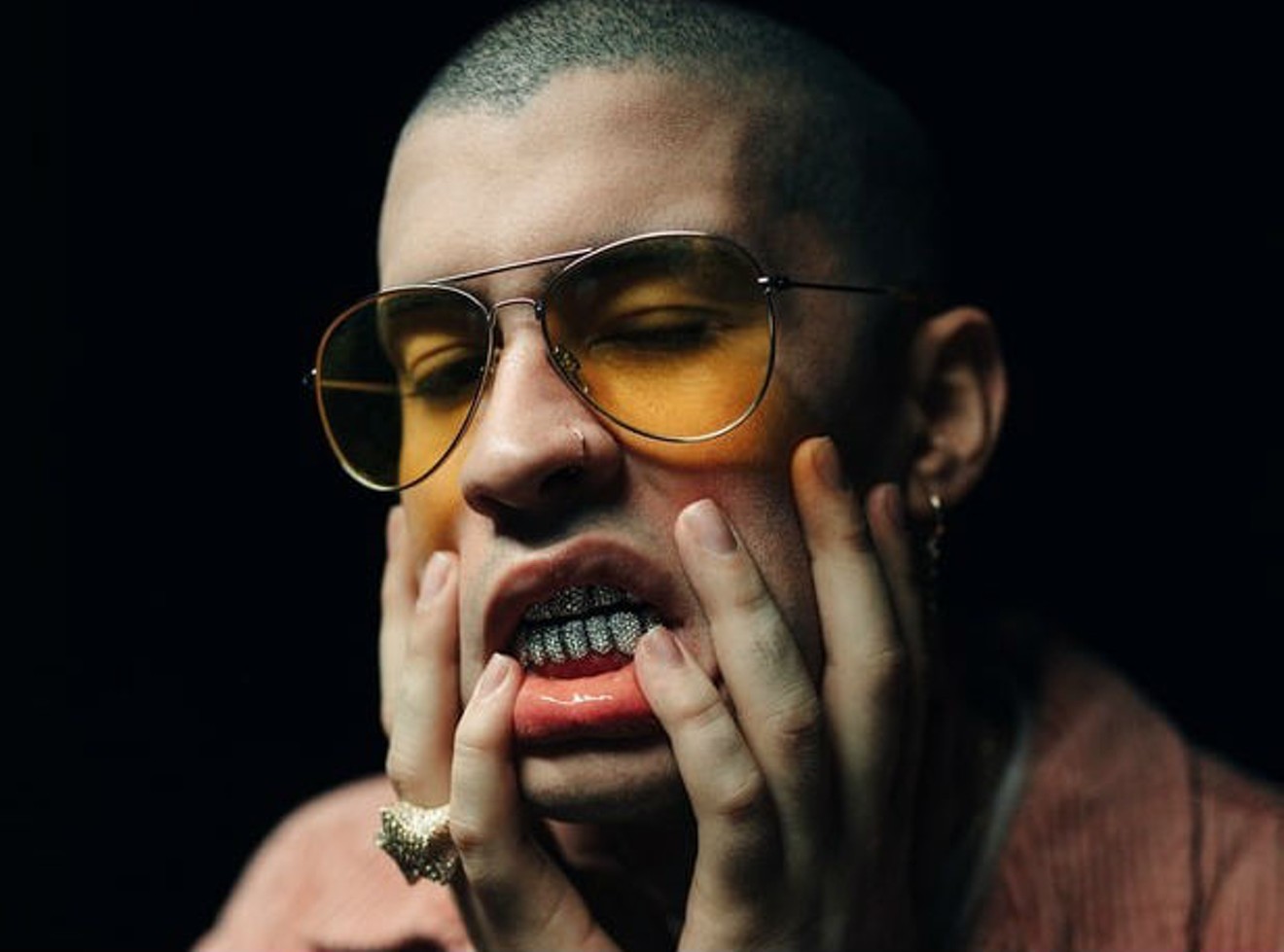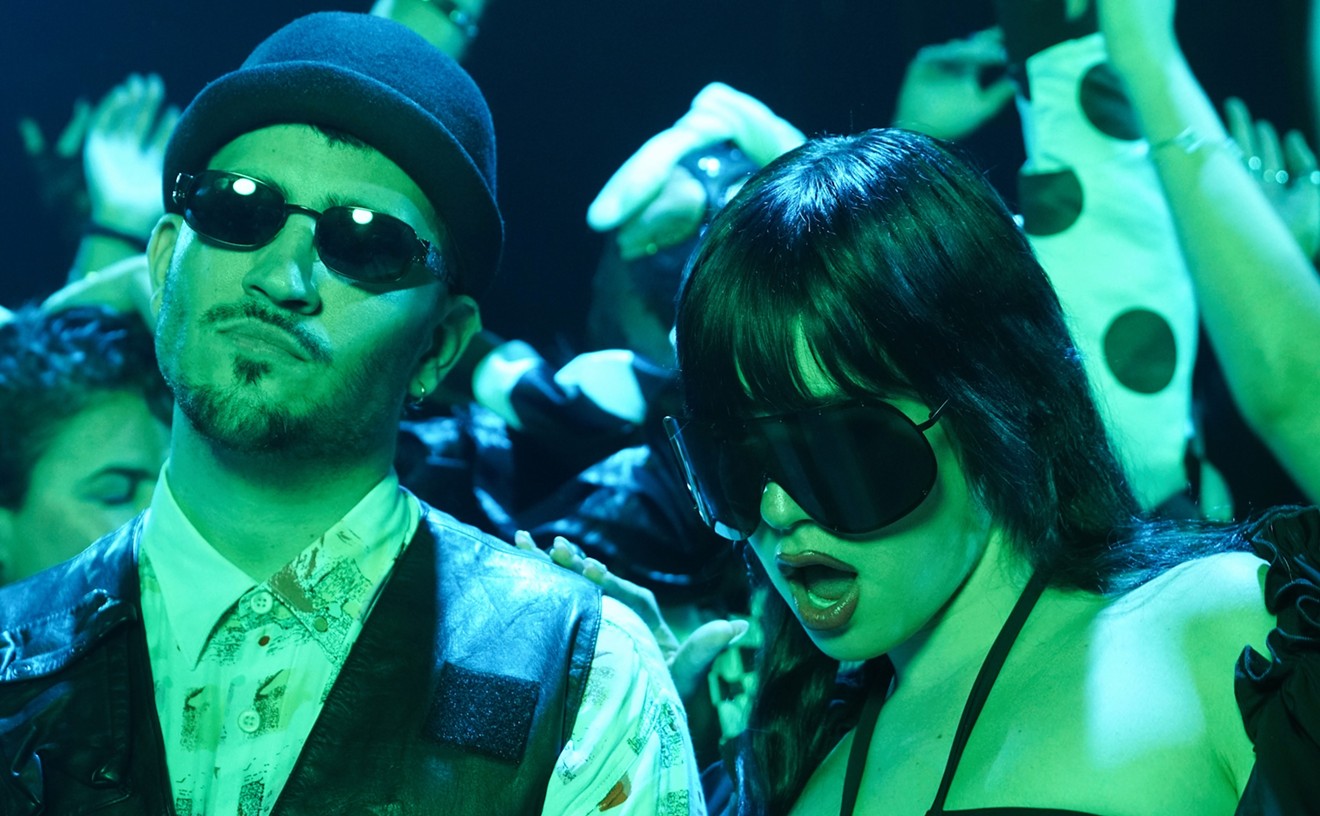My Panamanian mother never taught me Spanish. I thought that would be a disadvantage when I walked into a roomful of Hispanics during Bad Bunny’s #UpNext Apple event at 1306 Miami. I was wrong.
The space was filled wall-to-wall with gorgeous Afro-Latinas. The 1306 stage was lit up with Apple Music logos, Bad Bunny promo, and flashing lights as mamis dressed in hip-hugger jeans swayed to Latin music while they sipped wine with their pinkies out. There wasn’t an English-speaking person in sight, so I just smiled at everyone.
I waded through the crowd to the bar to await Bad Bunny, a 24-year-old Puerto Rican singer/rapper who has become the poster boy for Latin trap. He’s known for taking American-trap-influenced beats but howling his lyrics en español. I’ve heard a few songs of his, including "Dime si Te Acuerdas," but because I had no idea what he was saying, I didn’t give it too much thought.
As Bad Bunny took the stage, the fans representing every Spanish-speaking country lost their shit. They sang along to the lyrics of "Krippy Kush," "Sensualidad," "No Te Hagas," and others. The beat to "Krippy Kush" vibrated through the speakers, causing asses, including mine, to shake. I couldn’t understand anything other than the song's repetitive “krippy,” but it didn’t matter. Bad Bunny’s short set came to an end quickly, and the streets flooded with fans, including me.
Latin trap isn’t new to South Florida’s music scene. Miami’s Cuban Xantanna and James Lance have been contributing to the culture for several years and are proud of the fusion that Hispanic and black cultures have provided. In Latin trap, the cadence mimics that of Southern hip-hop artists such as Future, Migos, and Gucci Mane. A majority of songs are in Spanish or Spanglish. In Bad Bunny’s case, although all of his lyrics are in Spanish, the music’s rhythm is universal, allowing any listener to relate.
A recent Harvard-based study dubbed music the universal language. No matter the language of a song's lyrics, the listener’s perception is based on how it makes them feel. Bad Bunny’s music makes me feel sexy, caliente, badass, and a tad bit gringa. It’s common for non-Spanish-speaking Latinos to feel out of place because they are missing such a huge part of their culture: the language. Regardless of what language you speak, the culture still runs deep in your blood. As for first-generation Panamanian and Haitian women like myself, the beat allows us to feel Bad Bunny first before asking Mom what he actually said. Though Bad Bunny doesn’t speak a lick of English, it shouldn't stop anyone — gringa or otherwise — from witnessing a growing movement in our Latin community.
Bad Bunny. 8 p.m. Saturday, April 28, at the American Airlines Arena, 601 Biscayne Blvd., Miami, 786-777-1000, aaarena.com. Tickets cost $60.50 to $140.50 via ticketmaster.com.
[
{
"name": "Air - MediumRectangle - Inline Content - Mobile Display Size",
"component": "19274298",
"insertPoint": "2",
"requiredCountToDisplay": "2"
},{
"name": "Editor Picks",
"component": "17482312",
"insertPoint": "4",
"requiredCountToDisplay": "1"
},{
"name": "Inline Links",
"component": "18711090",
"insertPoint": "8th",
"startingPoint": 8,
"requiredCountToDisplay": "7",
"maxInsertions": 25
},{
"name": "Air - MediumRectangle - Combo - Inline Content",
"component": "17482310",
"insertPoint": "8th",
"startingPoint": 8,
"requiredCountToDisplay": "7",
"maxInsertions": 25
},{
"name": "Inline Links",
"component": "18711090",
"insertPoint": "8th",
"startingPoint": 12,
"requiredCountToDisplay": "11",
"maxInsertions": 25
},{
"name": "Air - Leaderboard Tower - Combo - Inline Content",
"component": "17482313",
"insertPoint": "8th",
"startingPoint": 12,
"requiredCountToDisplay": "11",
"maxInsertions": 25
}
]











